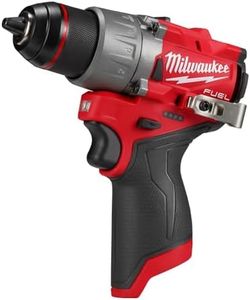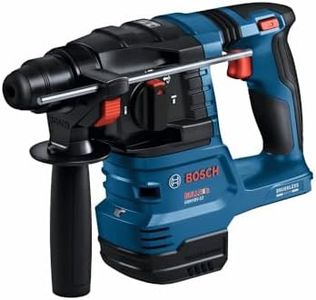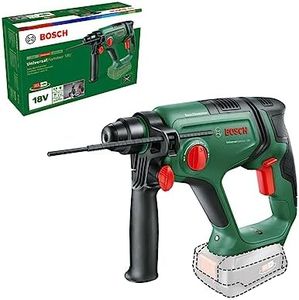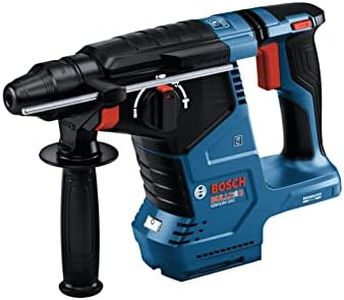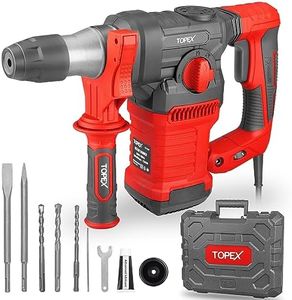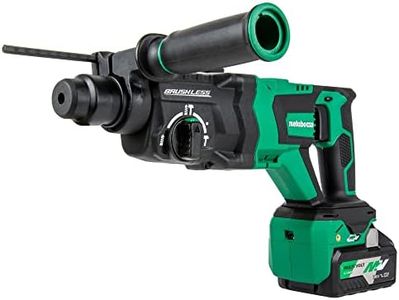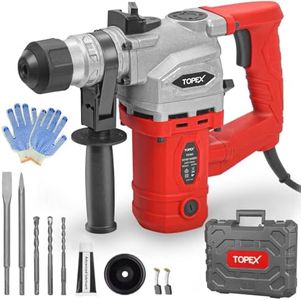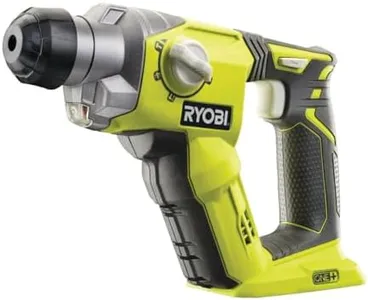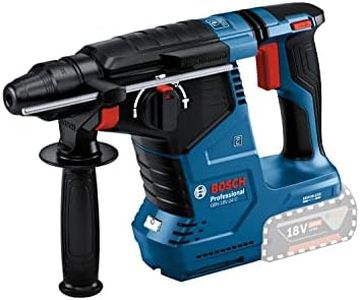We Use CookiesWe use cookies to enhance the security, performance,
functionality and for analytical and promotional activities. By continuing to browse this site you
are agreeing to our privacy policy
10 Best Rotary Hammer Drills
From leading brands and best sellers available on the web.Buying Guide for the Best Rotary Hammer Drills
Choosing the right rotary hammer drill can make a big difference for your drilling and chiseling tasks, especially when working with tough materials like concrete, brick, or stone. Understanding the main features will help you select a tool that matches the type and frequency of work you plan to do. By considering the key specifications, you can avoid the frustration of an underperforming or overly bulky drill and instead enjoy faster, easier work.Power (measured in amps or watts)Power refers to how much electrical energy the drill’s motor can use to get the job done. This impacts how effectively the tool can break through hard materials. Generally, lower power models are lighter and suited to basic jobs like drilling small holes in brick or tile, while higher power models are heavier and more suitable if you’re drilling large holes or taking on tougher materials like reinforced concrete. For occasional, light-duty home use, less powerful tools are usually sufficient. For frequent, heavy-duty work, opt for a more powerful tool to avoid the motor bogging down or wearing out quickly.
Impact Energy (measured in Joules)Impact energy tells you how strongly the rotary hammer hits with each blow, directly affecting how well it drills or chisels hard surfaces. Rotary hammers with smaller impact energy are suitable for lighter tasks such as tiles or thin masonry, while those with higher impact energy can break up thick concrete or do demolition work efficiently. If your main task is occasional drilling of small holes, go with lower impact energy; if you need to break up large amounts of concrete or do professional work, look for higher values.
Drilling ModesRotary hammer drills can typically operate in three modes: drilling, hammer drilling, and chiseling (sometimes called hammer only). Drilling mode is for regular holes in wood or metal, hammer drilling combines rotation and hammering for tough materials like concrete, and chiseling mode is for breaking or chiseling without rotation. Pick a drill that offers the modes you need: if you only need to drill holes, you may not need chiseling; if you want versatility, a model with all three modes is best.
Chuck Type (SDS-Plus or SDS-Max)The chuck is the part of the rotary hammer that holds the drill bit. SDS-Plus and SDS-Max are two common systems: SDS-Plus is standard for lighter, smaller jobs and accepts smaller bits, making it lighter and easier to handle. SDS-Max is for heavy-duty models with larger, more robust bits for demanding tasks. Choose SDS-Plus if most of your jobs are small to medium, and SDS-Max for big projects or professional work.
Weight and SizeThe size and weight of a rotary hammer drill affect how comfortable it is to use over time, especially above head height or in tight spaces. Lighter, more compact drills are better for frequent home projects or working in awkward positions. Heavier drills provide more power and impact energy, making them suited for major demolition work but can quickly tire the user. Choose based on the type of tasks and how long you’ll use it at a time.
Vibration ControlVibration control is about how well the tool reduces shaking during use. Too much vibration can lead to fatigue and even long-term injury during extended use. Basic models may have little vibration damping, suitable for short tasks, while advanced models include special handles or internal mechanisms to reduce strain. If you plan to use the drill frequently or for prolonged periods, vibration control is a wise feature to prioritize.
